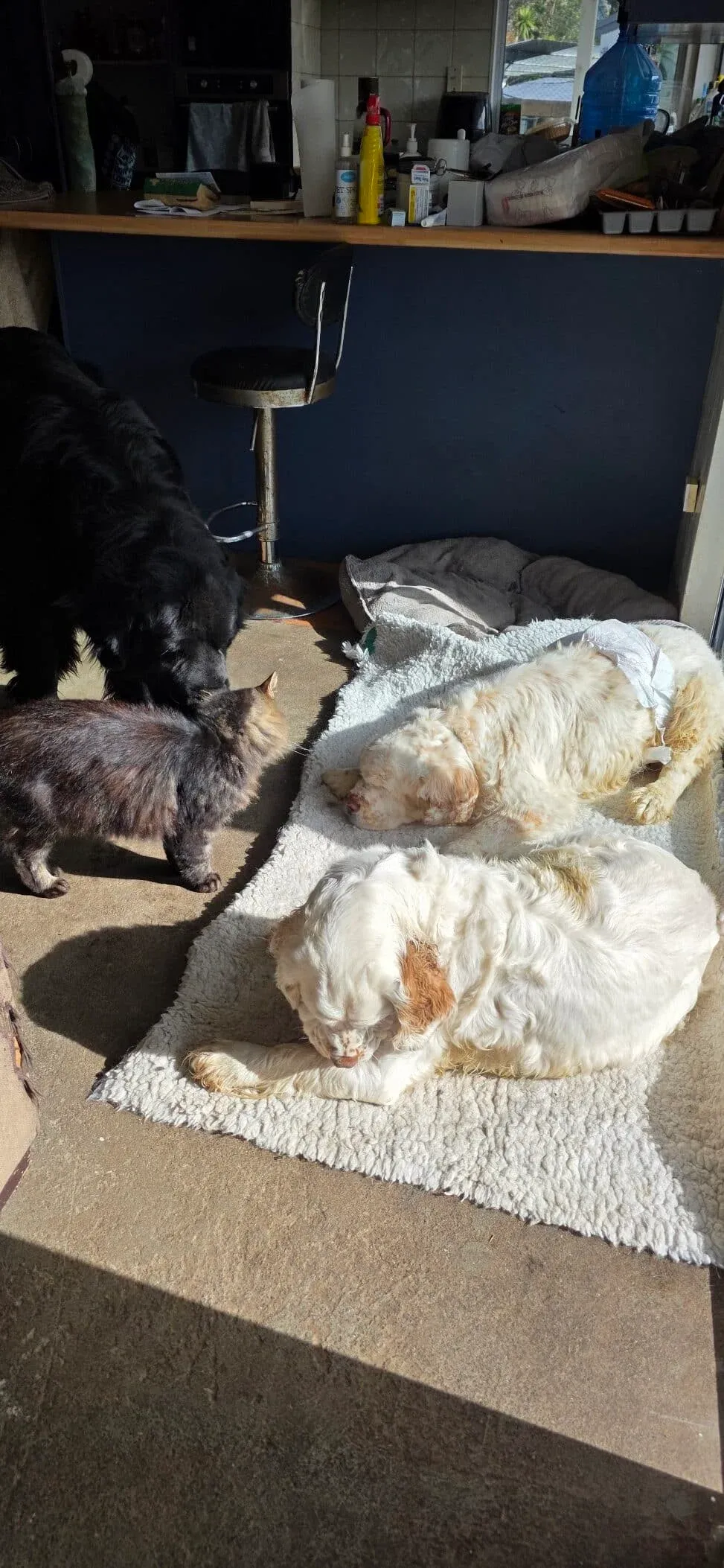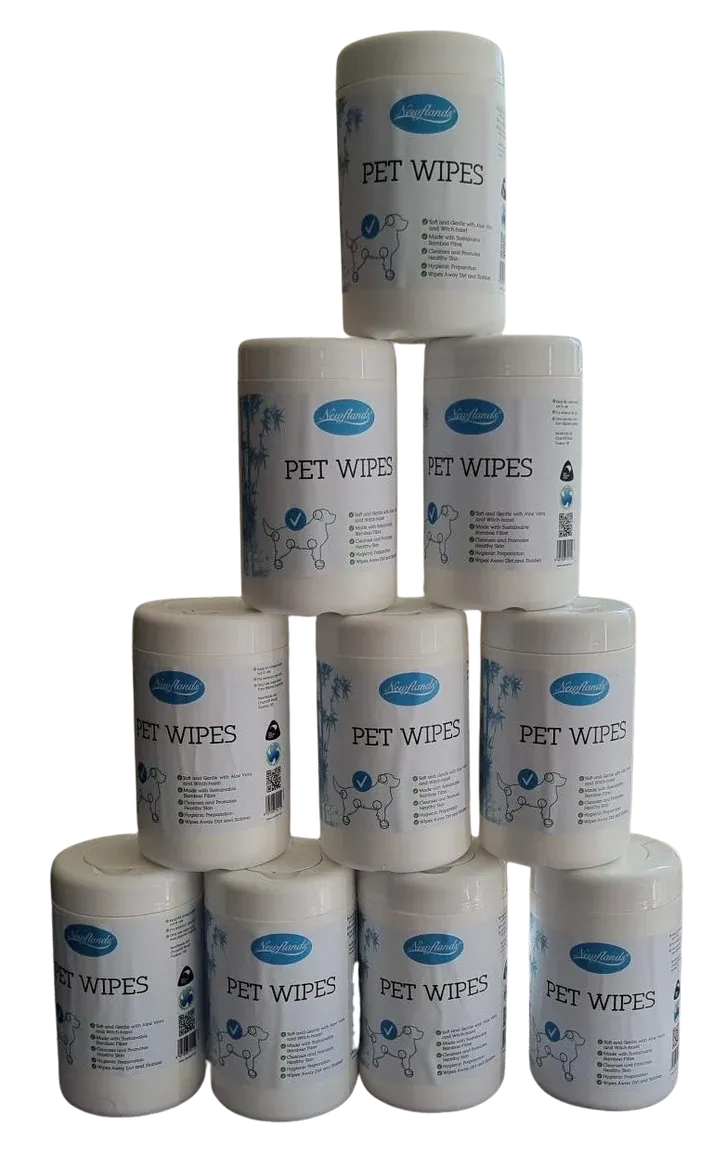Diapers for Elderly Incontinent Dogs: Help or Harm?

Fiona Robertson

The Upside of Dog Diapers
As dogs age, many may experience incontinence, which can pose various challenges for pet owners. One practical solution that has gained popularity is the use of dog diapers. These specially designed garments offer several notable benefits, making them a valuable tool for managing this common issue among elderly incontinent dogs.
First and foremost, dog diapers help maintain a clean and hygienic environment in the home. Incontinence can lead to unsightly stains, unpleasant odors, and potential health hazards if not managed properly. By using diapers, pet owners can effectively prevent accidents from occurring on furniture or flooring, thereby simplifying the cleanup process and preserving the overall cleanliness of their living spaces.
Furthermore, dog diapers provide a sense of freedom for elderly dogs who may otherwise be restricted due to their incontinence. These garments enable pets to engage in daily activities, such as going for walks or spending time with family members, without the constant worry of having an accident. This increased mobility can contribute positively to their emotional well-being and overall quality of life.
Additionally, using dog diapers can offer flexibility for pet owners as they explore various treatment options for their pets’ incontinence. While investigating possible medical or behavioural solutions, diapers can serve as a temporary measure to alleviate immediate concerns. This approach allows pet owners to focus on finding the most effective long-term treatment while ensuring that their pets remain comfortable and cared for in the meantime.
Dog diapers present numerous advantages for pet owners managing elderly dogs with incontinence. From keeping homes clean and providing freedom for pets to acting as a stopgap while exploring other treatment options, these specialized products can make a significant difference in the lives of both dogs and their owners.
I have been using nappies with my 14 year old clumber spaniel Beau for the last about 6 months and have found nappy rash a little issue but have used a Zinc and Castor oil barrier cream which has helped along with stint in the sun where ever possible to help keep the rash away a side effect was the winter coat growing to keep him warm- so I often said to him let change your willy warmer as we needed to make sure it was covered or it leaked out the side it was a definite knack to it. I was also given some material ones but found the supermarket size 6 toddler over 6kg much easier to attach attached together would wrap round without strangling him and buying in bulk was the best way to go.
The Hidden Risks and Downsides
The use of diapers for elderly incontinent dogs, while a convenient solution for managing incontinence, presents several hidden risks and downsides that pet owners must consider. One significant concern is skin irritation, often resulting from prolonged contact with urine or faeces. This irritation can lead to inflammation or even severe dermatitis, with symptoms including redness, itching, and discomfort. To mitigate this risk, it becomes crucial for owners to regularly change their dog’s diaper and ensure proper hygiene practices are followed.
Additionally, the use of diapers can increase the risk of urinary tract infections (UTIs). Restricting a dog’s ability to relieve itself naturally may contribute to the development of UTIs, characterised by symptoms such as frequent urination, straining during urination, or blood in the urine. If a dog is unable to express its needs, the lack of regular bathroom breaks may result in a buildup of harmful bacteria.
Moreover, the use of diapers can potentially delay important medical diagnoses. Symptoms of underlying health issues, such as bladder infections or gastrointestinal problems, may be obscured by the presence of a nappy. If the dog’s toilet patterns are altered, it becomes difficult for owners to recognise atypical behaviors that need attention, thereby prolonging discomfort or worsening conditions.
Chewing also poses a significant hazard when dogs wear diapers. Some dogs may attempt to chew or remove their nappy, leading to choking hazards or gastrointestinal issues if ingested. Such behaviours indicate stress or discomfort, necessitating exploration of alternative solutions. Furthermore, constant diaper use can provoke emotional and behavioural changes, leading to anxiety or a sense of confinement in pets. It is essential for owners to carefully monitor their dogs for these signs, ensuring that the use of diapers does not negatively impact their overall well-being.
Best Practices for Safe Nappy Use
When considering the use of nappies for elderly incontinent dogs, following best practices is imperative to ensure the comfort and health of your pet. First and foremost, a veterinary check-up is crucial before introducing any diapering solutions. Your vet can help determine the underlying causes of incontinence, recommend appropriate products, and provide guidance to optimise your dog’s overall wellness.
Choosing the right type of diaper is equally important. Diapers come in various styles and sizes, including disposable and washable options. Ensure that you select a product that fits well to prevent leaks and discomfort. Additionally, consider materials that offer breathability and absorbency to keep your pet dry and reduce the risk of skin irritation.
Frequent changes of the diaper are essential to maintain hygiene. It is advisable to check your dog regularly and change the diaper as soon as it becomes soiled. This practice not only helps protect against skin infections but also contributes to your dog’s overall comfort. Always keep an ample supply of diapers on hand, enabling you to respond promptly to any needs your dog may have.
Thoroughly cleaning the skin around the diaper area is vital every time you change your pet’s diaper. Use gentle, pet-safe wipes or a damp cloth to remove any waste and maintain skin integrity. This can significantly decrease the chances of irritation or infection, allowing your dog to feel more comfortable.
Lastly, allow your dog “nappy-free” time whenever possible. This practice gives your pet the opportunity to breathe and reduces the likelihood of skin issues caused by prolonged diaper use. By implementing these best practices, pet owners can significantly enhance their elderly dog’s well-being while using diapers, ultimately leading to a healthier and happier life for their beloved companions.
Exploring Alternatives to Diapers
When dealing with elderly incontinent dogs, pet owners must consider a range of alternatives before settling on the use of diapers as a long-term solution. One effective option is to consult with a veterinarian about potential medical treatments tailored to the specific needs of the dog. Medications that enhance bladder control or manage underlying conditions may be appropriate and can significantly improve the quality of life for the pet.
Additionally, hormonal therapies can be an effective alternative for male and female dogs who experience incontinence due to hormonal changes. These treatments are designed to restore balance and can lead to improved bladder function. As hormonal changes can vary based on age and breed, personalised assessments by a veterinarian are essential in determining the best course of action.
Physical therapies, such as exercises that strengthen the pelvic floor, may also play a key role in managing incontinence. Engaging in such therapies can help regain control over the bladder, providing a more lasting solution rather than relying solely on diapers. Moreover, creating consistent potty schedules can contribute significantly to managing incontinence in elderly dogs. By establishing a routine that accommodates the dog’s needs, owners can reduce accidents and maintain better hygiene.
Another important aspect to consider is water intake. Adjusting the quantity and timing of water consumption can help prevent accidents. Pet owners should not consider reducing water intake as this can lead to kidney issues but change the nappy often and providing more frequent bathroom breaks throughout the day. Such strategies can promote a proactive approach to managing incontinence.
By exploring these alternatives, pet owners can take meaningful steps to address incontinence in their elderly dogs effectively. This proactive care not only enhances the quality of life for pets but also fosters a deeper bond between pet owners and their furry companions. We just need to get over ourselves poo and pee can be cleaned up and washed off.


